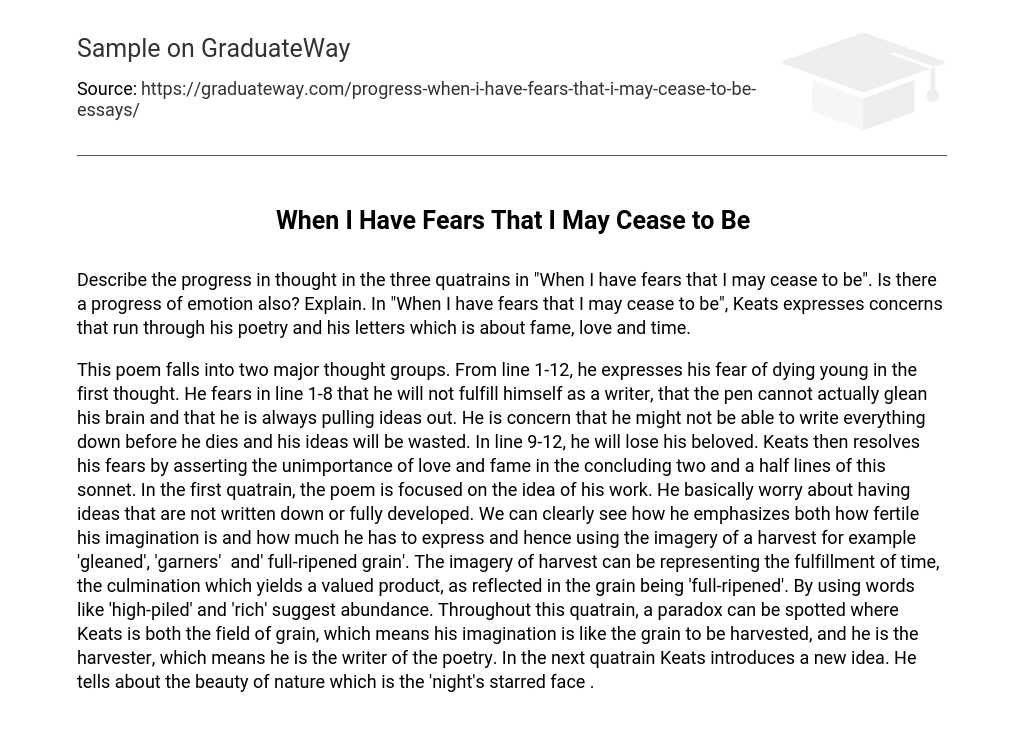Describe the progress in thought in the three quatrains in “When I have fears that I may cease to be”. Is there a progress of emotion also? Explain. In “When I have fears that I may cease to be”, Keats expresses concerns that run through his poetry and his letters which is about fame, love and time.
This poem falls into two major thought groups. From line 1-12, he expresses his fear of dying young in the first thought. He fears in line 1-8 that he will not fulfill himself as a writer, that the pen cannot actually glean his brain and that he is always pulling ideas out. He is concern that he might not be able to write everything down before he dies and his ideas will be wasted. In line 9-12, he will lose his beloved. Keats then resolves his fears by asserting the unimportance of love and fame in the concluding two and a half lines of this sonnet. In the first quatrain, the poem is focused on the idea of his work. He basically worry about having ideas that are not written down or fully developed. We can clearly see how he emphasizes both how fertile his imagination is and how much he has to express and hence using the imagery of a harvest for example ‘gleaned’, ‘garners’ and’ full-ripened grain’. The imagery of harvest can be representing the fulfillment of time, the culmination which yields a valued product, as reflected in the grain being ‘full-ripened’. By using words like ‘high-piled’ and ‘rich’ suggest abundance. Throughout this quatrain, a paradox can be spotted where Keats is both the field of grain, which means his imagination is like the grain to be harvested, and he is the harvester, which means he is the writer of the poetry. In the next quatrain Keats introduces a new idea. He tells about the beauty of nature which is the ‘night’s starred face .





